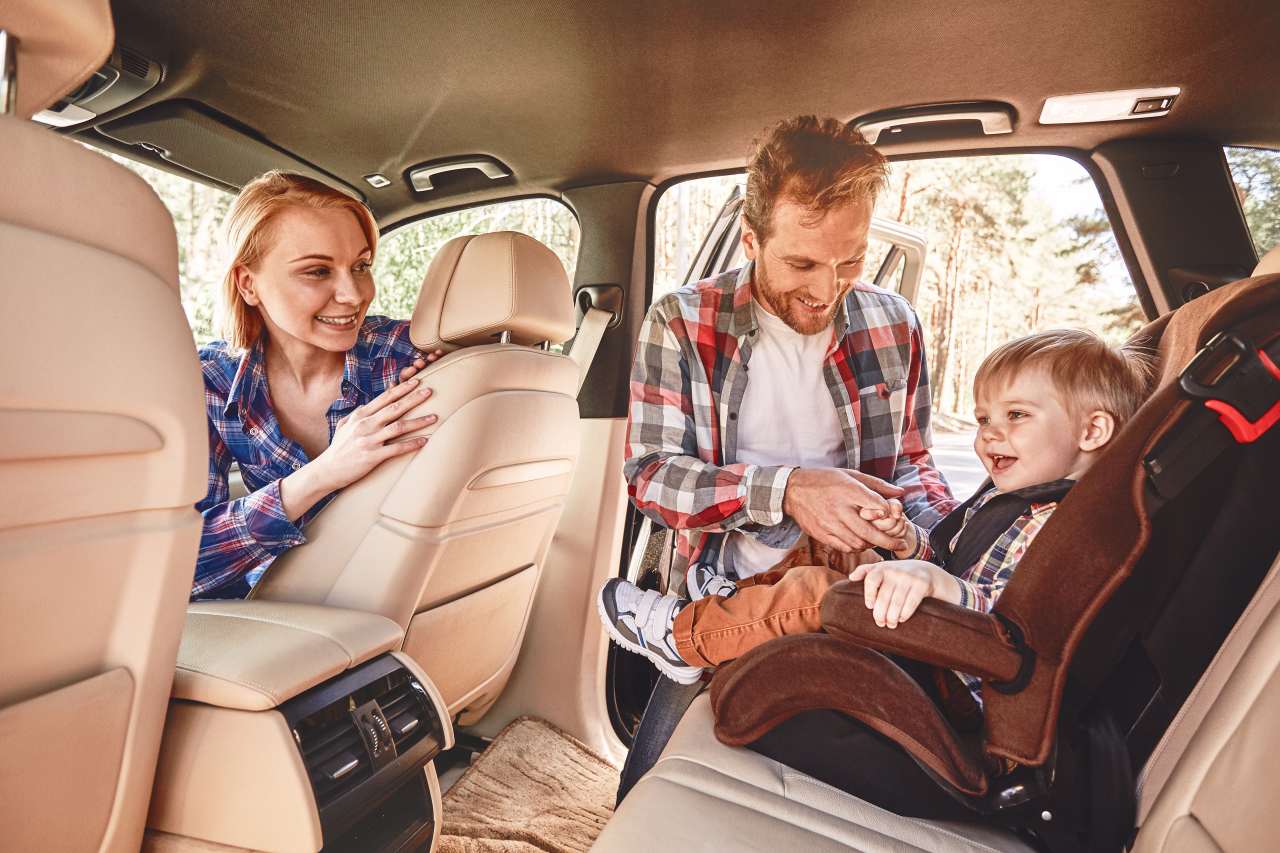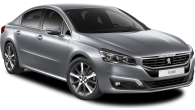Ah, the Toyota Camry. A beloved sedan that has been the benchmark for reliability and family-hauling ever since the nameplate arrived on our shores in the early 1980s.
Adored by grandparents and commercial drivers everywhere, the newest iteration upholds the traditions while carefully positioning itself for a modern market.
I'm very happy that the champagne paintwork of my dad's 2001 Camry is no longer in fashion but that the practicality remains.
In an SUV-heavy market, sedans seem few and far between but it still has some strong competition from the Honda Accord, Skoda Octavia and Volkswagen Passat.
I've been driving the Camry SL Hybrid with my family of three to see how it stacks up. Keep reading to find out!
Toyota Camry 2023: SL Hybrid
| Engine Type | Inline 4, 2.5L |
|---|---|
| Fuel Type | Premium Unleaded/Electric |
| Fuel Efficiency | 4.2L/100km (combined) |
| Seating | 5 |
| Price From | $47,850 - $55,000 |
| Safety Rating |
|
Price and features – Does it represent good value for the price? What features does it come with?
There are four models in the Camry line-up and the SL sits at the top, with a price tag of $50,320, before on-road costs.
That makes it more affordable than equivalent versions of its rivals, with the Skoda Octavia 180TSI being the closest at $53,090, the Volkswagen Passat 162TSI Elegance coming next at $57,790 and the Honda Accord Ti-LX Hybrid blowing them all away with a $61,900 price tag (all before on-road costs).
.jpg)
As you'd expect for a top-model, the SL is well-specified. Both front seats feature eight-way power adjustments, plus heating and cooling functions, as well as adjustable lumbar support.
A panoramic sunroof and JBL sound system with nine speakers rounds out the luxe factors while comfort gets a good look in with amenities like dual-zone climate control, electric tilt/telescopic steering wheel, keyless entry and leather-accented trims throughout.
You do have to fork out a bit extra ($590) for all but one paint colour but otherwise, you get a lot for your cash here.
.jpg)
Design – Is there anything interesting about its design?
The Camry is easily recognisable on the road. It has that 'Toyota-ness' with panelling and lights managing to look sharp and curvy all at the same time.
The full LED exterior lights and cool faux intake vents at the rear makes it look steadfastly handsome.
It has a lot of road-side presence due to its sheer size. It's 4885mm long, 1840mm wide and 1445mm high. That translates to roomy cabin space, where practicality rather than sexiness has taken the design reins.
The dashboard's centre curves towards the right, making it feel very driver-centric but not necessarily passenger friendly when it comes to accessing the charging ports or utility tray.
There are a multitude of soft touchpoints which combine with the panoramic sunroof to add a sense of refinement to the cabin.
Practicality – How practical is its space and tech inside?
The interior is quite practical and boasts a roomy cabin. I have plenty of head- and legroom in both rows, so taller passengers will feel comfortable.
Up front, the leather-accented seats are well-padded and are electric with heating and cooling functions, but the trim can feel a bit too synthetic for my liking.
It's easy to clean, though, which is always handy when you have kids or pets around.
.jpg)
Individual storage options are quite good with a 7.3-litre middle console, a glove box, plus two cupholders and a skinny drink bottle holder in each door.
The phone utility tray is great as it hides a second storage area underneath that's large enough for a wallet and keys.
The 9.0-inch touchscreen multimedia system is simple to use but is starting to look a bit old compared to its rivals.
.jpg)
There is wired Apple CarPlay and Android Auto, as well as, built-in satellite navigation which is always a bonus.
The 7.0-inch digital instrument panel is very easy to read and the coloured head-up display is clear, too.
Charging options are okay but not awesome for a top-model. You get a single USB-A port and 12-volt port up front and two USB-C ports in the back.
.jpg)
But there's no wireless charging pad or USB-C port in the front, which would provide faster charging speeds.
In the back seat, individual storage is average with two map pockets, two cupholders in the fold-down armrest and skinny drink bottle holders in the doors.
The amenities are a bit bare for a top-model and there are no additional luxe factors to add some comfort for older kids or adults, like heated seats or climate control. I do like the directional air vents and reading lights, though.
.jpg)
There are ISOFIX child-seat mounts on the outboard seats and three top-tether anchor points but two seats will fit best.
There is plenty of room for front passengers when a 0-4 rearward facing child seat is installed, too, but with the lower height of the car, you may get a sore back bending down all the time to buckle in an infant.
The boot is large at 524L but typical for a sedan, meaning the aperture is narrow. You might struggle to fit bulkier items.
There's a temporary spare wheel under the floor and while there's no powered tailgate, you probably won't mind because it's so light to open.
Under the bonnet – What are the key stats for its engine and transmission?
This model has a 2.5-litre, four-cylinder hybrid engine with a maximum power output of 160kW but Toyota doesn't quote a combined torque figure.
I was very surprised by the power – it's got some serious grunt when you need it.
The SL is a front-wheel drive and has a continuously variable auto transmission, which is so smooth as to be almost undetectable for gear changing!
.jpg)
Efficiency – What is its fuel consumption? What is its driving range?
So, how's that hybrid efficiency? The official combined fuel cycle figure is 4.7L/100km and my real-world usage came to 5.5L/100km.
That's great for this size sedan! I covered a combination of open-road and urban driving this week, so I'm very happy with my result.
Based on the combined fuel figure and the 50L fuel tank, you should be able to get a driving range of around 1064km, which is stellar.
Toyota recommends a minimum 95 RON petrol to be used for the Camry.
Driving – What's it like to drive?
I fell in love with this car once I started driving it because it's got to be one of the smoothest cars I've driven! It totally has your back when it comes to ride comfort, too.
The suspension feels well-tuned for Aussie roads but doesn't feel springy. It will still hug the road in a hard corner, making it a pleasure on my winding coastal journeys this week.
As I've mentioned, the power delivery surprised me and I had no trouble keeping up with traffic or overtaking. It's also very responsive accelerating from a full stop, which isn't always the case for CVTs.
The cabin is whisper quiet, even at higher speeds and the engine noise around town is all but mute.
The visibility is good from my driving position and despite its larger size, it's super easy to park. It has a 360-degree view reversing camera but I was disappointed with the image quality. Serves its purpose, though.
Warranty & Safety Rating
Safety – What safety equipment is fitted? What is its safety rating?
The safety features are extensive on the Camry and I really like the automatic collision notification. If airbag deployment or a serious collision is detected, Toyota's emergency call centre is notified and if you need assistance or if you don't respond, they will notify emergency services to your situation and location.
Other standard safety features include daytime-running lights, blind-spot monitoring, SOS emergency call button, stolen vehicle tracking, forward collision warning, rear cross-traffic alert, lane keeping aid, lane departure warning, AEB (with car, pedestrian and cyclist detection), adaptive cruise control with stop and go, intelligent seatbelt reminders, traffic sign recognition, 360-degree view camera, as well as, front and rear parking sensors.
The Camry was awarded a maximum five-star ANCAP safety rating but it was done ages ago in 2017. There are seven airbags but it's missing the front centre airbag we're starting to see on newer cars.
.jpg)
This also has a lot of road alerts, for example when you are approaching, in and exiting a school zone (yep, an alert for each scenario) or approaching a speed/red light camera.
The settings are buried deep in the menu and I ended up turning most of them off given of how intrusive they are.
My Dad likes this feature on his Prado but I'm not a fan at all.
Ownership – What warranty is offered? What are its service intervals? What are its running costs?
The on-going costs are great on the Camry Hybrid. It comes with a five-year/unlimited km warranty, but you can get up to 10 years warranty on the hybrid battery if you service the car at a Toyota dealership.
It has a five-year capped-price servicing plan and services are a flat $255 per service, or $1275 over the five-years – which is cheap compared to its rivals.
Servicing intervals are every 12 months or 15,000km, whichever occurs first.
Verdict
The Toyota Camry SL Hybrid offers good practicality for families and has a handsome road-side presence. It's well-specified but some of the tech is being outshone by its rivals now. I love the price tag and the ongoing costs because in this day and age, every penny matters! But it's the driving experience that's the highlight for me and this earns an easy 9.0/10 from me.
My son loved the blue colour but was a little annoyed that our morning school run conversations were constantly interrupted by those school zone alerts. He still enjoyed this one though and gives it a 7.0/10.
Pricing Guides





.jpg)
.jpg)
.jpg)
.jpg)
.jpg)
.jpg)
.jpg)
.jpg)
.jpg)

.jpg)















.jpg)
.jpg)
.jpg)
.jpg)
.jpg)
.jpg)




.jpg)

Comments